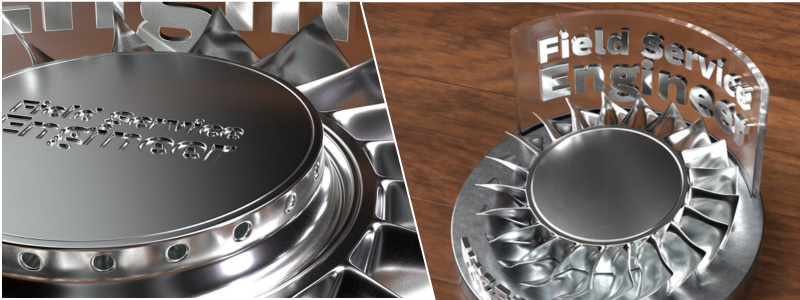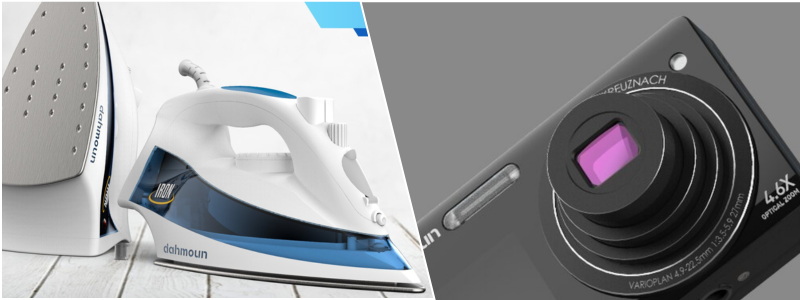How do you turn your bright ideas into tangible reality?
Compared to what most people think, products are developed over time. Before something comes to fruition, it goes through a long and arduous process to ensure it serves its purpose, performs its function, and exudes excellent aesthetics. Great ideas can change an entire industry when given the chance. As an inventor, you must take reasonable action to bring your product to market. This article is a step-by-step guide to bringing your invention to life.
 Table of contents
Table of contents
- 1. Prepare yourself and conceptualize the invention
- 2. Document the idea
- 3. Conduct market and product research
- 4. Design the product
- 5. Manufacture your prototype
- 6. Prepare an application for a provisional patent
- 7. Look for a reliable manufacturer (Not mandatory for licensing)
- 8. License or sell the product
- How Cad Crowd can help
1. Prepare yourself and conceptualize the invention
The number one step in turning your invention into reality is to have a concept of your invention in mind. During the earliest phases of invention, the key is to have a clear concept and idea of your invention. Investors should know where they expect their idea to go. They also need to see it clearly for accessible communication.
If you’re lingering on an invention idea, you have to be prepared from the get-go. Here are some critical questions you need to ask yourself:
- Does the market have other similar products that fulfill the needs of customers?
- Have I conducted sufficient research on my target customers?
- Do I have a good enough idea to have a spot in the crowded marketplace?
- Do I have a clear enough product idea, or do I need help clarifying my vision?
If you’re still having trouble, you can also get new invention design services, wherein you consult with freelancers to help you with your project on a personalized level. If you have clear answers to all these questions, you can proceed to the second step in making your invention.
2. Document the idea
At this point, you already have a clear image of your concept and have finished your research. This in-depth research helped you clarify the idea further and hone in on target customers. You’ve proven that you have a sound idea and that there is a potential market for it.
The next move for you to take is to document the idea to finally turn your invention into reality. Below are several steps you have to take as you document your idea:
- Get an inventor’s journal where you can write down your invention idea. This journal is a bound notebook whose pages are consecutively numbered and cannot be reinserted or removed.
- Add details about your invention’s concept, design, and potential marketability in the inventor’s journal.
- Time and date everything in the journal and look for a witness to sign it.
- Take photos of the invention with a watermark of the date you captured it.
Taking the crucial steps to document your idea can serve as your protection in the long run if an inevitable contestant for an idea shows up.
RELATED: Elevating your company using CAD product design services during product development
3. Conduct market and product research

After documenting your idea and being ready to proceed, your next step is conducting market and product research. Most inventors don’t make money from their ideas since they don’t conduct research.
This product research helps you understand if the idea already exists. The following are the critical steps involved in product research:
- Browse art databases to verify that your ideas and drawings don’t exist in art form yet.
- Check with the National Patent Office to see if your renderings and ideas don’t exist.
- Research the marketplace for similar items and confirm if the market still has gaps that need to be filled.
Market research can help you check if the market already has a product to answer customers’ pain points. Here are the steps to take during market research:
- Come up with online surveys to help discover customers’ pain points.
- Consider hosting casual focus groups with potential customers.
- Gather all feedback and use this to identify if you have a sound invention idea.
4. Design the product
After performing market and product research, you can now design your product. Below are the fundamental principles that investors should use during product design.
- Brainstorming
How would you like to communicate your product idea visually? Consider how the idea will look on a tablet or paper. Brainstorming in design is about defining the problem and developing many ideas. It’s critical to have answers to solve as many issues as possible. Critical eyes don’t have a place at this point.
- Outlining expectations
This is the stage where it’s vital to have a good sense of direction. This might involve having loosely outlined tasks you will complete in the next few weeks. It can also include listing industrial design firms you can contact when you need assistance during prototyping. No matter what it is, you can stay on track if you have expectations.
- Sketching
Sketching is an ideal way to hone in on your design vision for your idea. These sketches don’t need to be perfect; rough ones are even better if they show how you envision the product after completion.
RELATED: Prototyping for product development & investor presentations
5. Manufacture your prototype

While creating your intended product’s design was a significant step, a prototype is just as crucial. Accordingly, freelance prototype design services help bring your invention to life. There are three steps typically involved in prototype manufacturing. These include the following:
- Prepare a concept sketch of the appearance and function of your prototype.
- Turn your idea into a 3D digital model
- Develop a physical model of the invention
- Look for a manufacturer that can help in large-scale building and testing of your prototype
6. Prepare an application for a provisional patent
Congratulations! Your idea has the potential to become a tangible product! This is when you must ensure it will stay yours and yours alone. A provisional patent is incredibly beneficial for an inventor. Inventors can apply for a provisional patent without a disclosure agreement, oath, declaration, or official patent claim.
Applications for provisional patents have a waiting period of 12 months before the patent becomes legally binding. This period begins right on the day the patent is filed. Inventors must also file for non-provisional patent applications to take advantage of early filing. This process can take up much of your energy and attention; hence, you may opt to get patent services to assist you throughout the application process.
RELATED: How to calculate a product development cost estimate for new products
7. Look for a reliable manufacturer (Not mandatory for licensing)
Finding a potential product manufacturer is the next step in making your invention a reality. Before doing so, however, you need to iron out a few details.
- Decide on the type of manufacturer you plan to work with. There are three main types of manufacturers. The first are manufacturers that produce products according to your product ideas. The second type involves suppliers, distributors, or wholesalers who purchase existing products and brands. The third type comprises dropshipping companies that can supply products and fulfill the orders of existing products and brands.
- Determine if you would like to opt for an international or domestic manufacturer. International manufacturers are your best option if you focus more on long-term global reach. Meanwhile, domestic manufacturers are ideal for inventors who are conscious of the environment and wish to prioritize quality control.
- Identify what you plan to offer as an inventor. Do you welcome the idea of custom orders? If so, the manufacturer should offer this. What is your preferred lead time or the time between the order placement and shipping? How much do you plan to spend on shipping costs? How much is your target cost per unit? Do the manufacturers you’re considering have a defect policy in place? What kind of factory conditions do they have? Are these ethical or sustainable?
- Choose payment and quantities for your orders. What target number of product units do you plan to produce at first? Suppliers have a minimum commitment, so agreeing with the number is important. Other manufacturers also require upfront payment to start production. Consider your preference and budget, check for possible negotiation, and decide.

8. License or sell the product
Licensing or selling the product is the best option for small manufacturers or investors. With product licensing, inventors can sell product ideas to manufacturing companies. You then earn a profit in exchange for selling your concept to them through a percentage of every sale made.
The following are the main benefits of licensing or selling your product:
- It opens doors for additional income opportunities.
- Prevent risks and challenges associated with product development, like lack of money or experience to produce the items.
However, you also need to consider a few drawbacks, such as the following:
- There is a slight chance for the inventor to gain wealth if they sell their idea to a big company. To be rich, consider other options.
- The company that you sold your idea to will be its new owner. Once they develop a new, improved version of the invention, you may not receive any royalties from this.
RELATED: The advantages of product licensing: how to get your invention made without starting a business
How Cad Crowd can help
If you need help turning your invention into a reality, Cad Crowd can connect you with the right professionals who can transform your ideas into tangible products. Get a free quote today!
